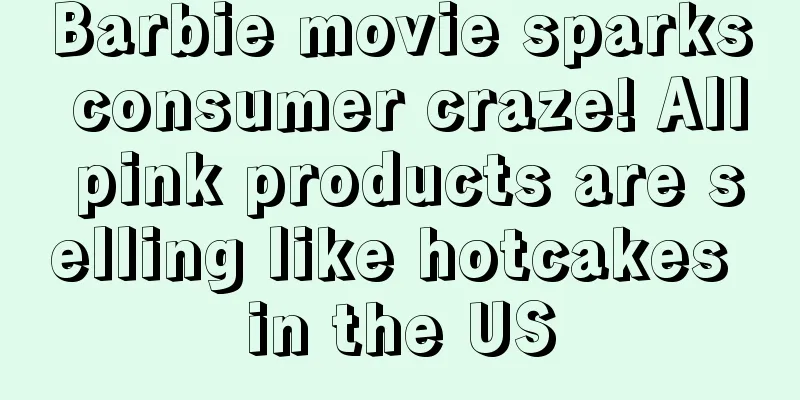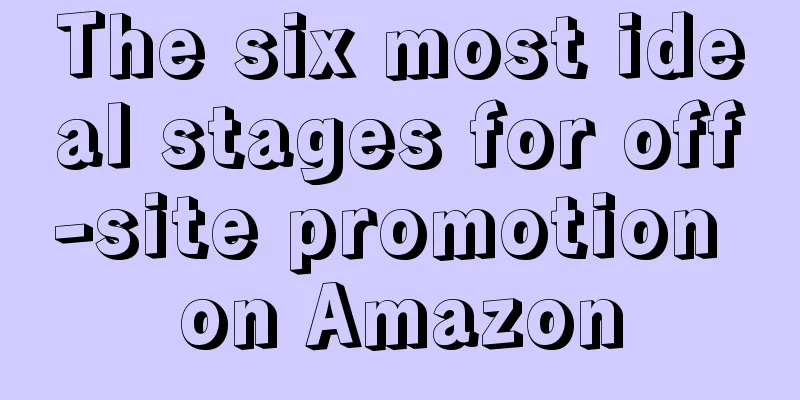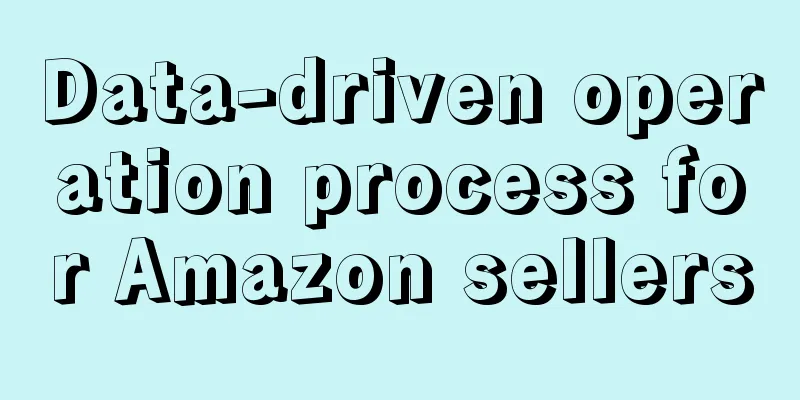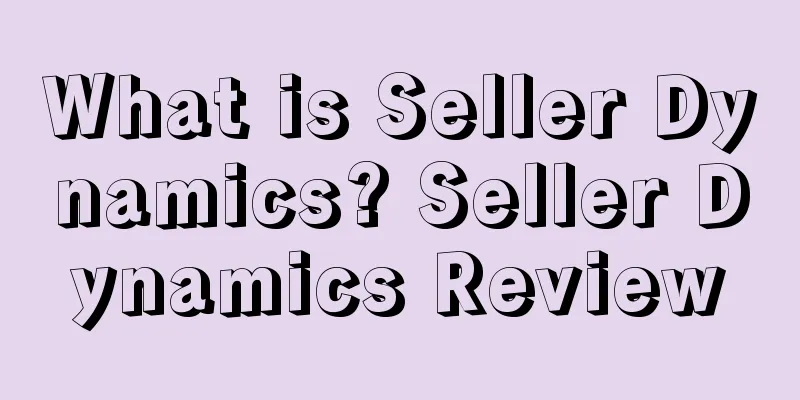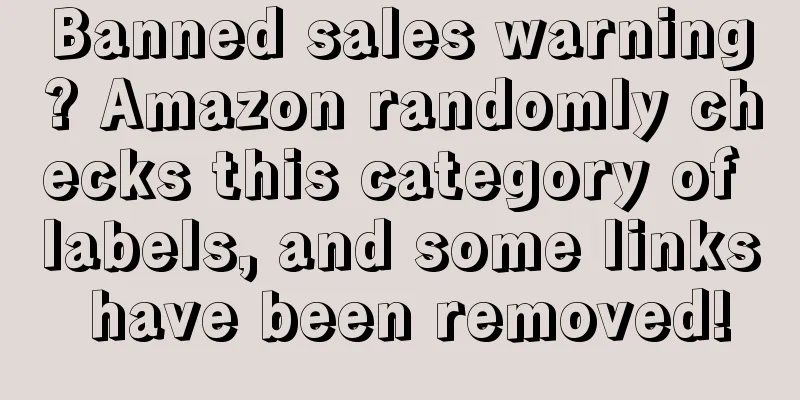Regarding Amazon SP advertising, there are still a lot of practical tips here
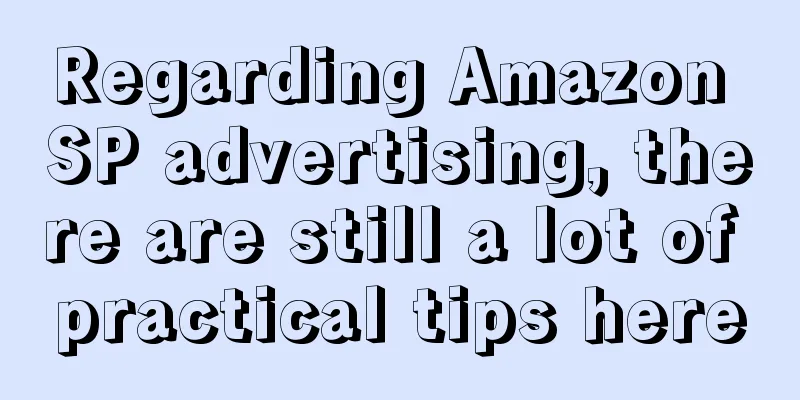
|
Amazon ads change every day. An ad that brought you sales yesterday may be ineffective tomorrow, so you need to keep an eye on your campaigns and be flexible. There are currently three types of advertising on Amazon:
Among them, SP is the most common form of advertising and also a type of PPC (pay per click) advertising. So today we will mainly talk about SP advertising. Before placing SP advertising, do you know these contents? Amazon advertising is much more complicated than you think. If you think you can just leave it alone after setting all the parameters, then you might as well not do SP advertising. If you want to increase your income and build a brand, you should treat it like a product listing, constantly optimizing, testing, and discovering patterns. 1. What is Amazon SP Advertising? Amazon SP advertising is an advertising service provided by Amazon to sellers, allowing sellers to promote their products or brands through Amazon's official channels, making it easier for consumers to discover and purchase products. We can understand what Amazon SP advertising is from two aspects.
Therefore, Amazon SP ads are ads that sellers win premium positions in Amazon search results by bidding on keywords. Every time a consumer clicks on an SP ad, the seller who places the ad will pay for the click, which is called PPC advertising. Basic indicators:
2. What kind of sellers can place SP ads? According to Amazon's Virtuous Cycle, the more a seller does for Amazon and its customers, the more choices and opportunities they get. Conversely, the more a seller sells, the better it is for both the seller and Amazon. Of course, the more money Amazon makes from a brand or product, the better the product's relevance and ranking performance, perpetuating the cycle.
There are two types of sellers on Amazon:
In terms of advertising, Amazon provides the most and best to Amazon-operated 1P sellers. 1P sellers can run a range of Amazon ads, including:
Only 3P sellers who have registered for Amazon brand registration can use SPA and SBA. One of the reasons for sellers to register for Amazon brand registration is to be able to use SBA. Another reason is to protect the brand and prevent copycat sales. The following figure shows the permissions that sellers can use for Amazon advertising:
3. What benefits can Amazon SP advertising bring to sellers? 1) Introducing new products to the market That is to say, if you develop a new product, you can gain exposure on Amazon by placing Amazon SP ads and start selling it. 2) Use the halo effect to boost product sales and rankings Since you have placed SP ads for your products, your sales and rankings will increase. These changes will help you get more natural search traffic. 3) SP advertising: a new customer harvester Nothing is better than SP advertising to attract new customers, especially in the consumer goods market. And then, new customers are likely to make repeat purchases and become your brand loyalists. 4) Promote sales If you think the first few are not very useful to you, then you can rely on SP ads to promote sales. Spend $1 and make $2, why not? What needs to be emphasized here is that SP advertising is a necessity in today’s fiercely competitive environment of Amazon. As a seller, it is not enough for you to just use SP advertising, you also have to do better than your competitors. Note: SP ads do not display product ads on all pages, but appear at the front of the search results page after consumers search for relevant keywords. The display environment of ads has changed a lot, especially considering the mobile device side. To achieve sales, your products must be displayed in front of consumers so that they can be clicked and purchased, but they must not be offensive. Therefore, you have to make the product ads appear "low-key" at the top of the search results page, in the sidebar, and on the product details page of your competitors. This is the significance of running SP ads. 4. SP Advertising Series As shown in the figure, an Amazon SP campaign contains multiple ad groups and their contents.
1. Set up SP campaign In a SP campaign, you need to set up the following: (1) Campaign Name Choose a campaign name that is simple, captures the nature of your ad, and is easy for you to remember. (2) Target ACoS ACoS - advertising cost-effectiveness, is a key indicator to help sellers measure advertising costs. ACoS = total advertising spend ÷ total advertising sales × 100%. For example, if your advertising costs are $10 and your total product sales are $100, your ACoS is 10%. If the actual performance of the ad is different from the original strategy, the seller can adjust the ACoS. Based on experience, it is recommended to set the ACoS to 25% at the beginning. (3) Targeting Type Advertising delivery mode
(4) Daily Budget Set a daily budget to limit your advertising costs for one day. If you are running an automatic campaign, it is recommended to set the daily budget to $5-10; if it is a manual campaign, it is recommended to set the daily budget to $20. (5) Ad Groups Within each campaign, there are also ad groups. Within a single ad group, you’ll need to set up these:
2. Keywords The keywords in your ad group tell Amazon what terms your product is associated with. The phrase or words you choose determines which page your ad will appear on. Amazon will match the keywords included in your ad group with the words that customers search for. If your keywords and customer search terms match, then your ad will appear on the search results page. 3. Search terms Search terms are the words or phrases that consumers enter when searching on Amazon. Amazon matches user search terms with the keywords in your ads to display the most relevant products. Different keyword matching types will match different search terms. The following figure is a user search term report found using the PPC advertising optimization tool - Ignite's Advertising Platform.
4. SP advertising keyword matching method (1) Automatically match keywords Automatic advertising automatically matches keywords. Amazon's algorithm automatically selects product keywords based on your and your competitors' listings. advantage:
shortcoming
Amazon will not help you solve these problems because SP advertising is the largest source of revenue for Amazon advertising. Example: Apple Slicer The following are the automatically matched keywords recommended by Amazon, which look a bit strange:
But Amazon is customer service-centric after all, so it won't bluff when it comes to collecting customer data. That is to say, these keywords are indeed related to apple slicers through ASIN/SKU to some extent. It’s just that for sellers who run manual ads, it takes time and money to find out the connection. (2) Manually match keywords Sellers who choose manual campaigns have three matching methods when placing keyword ads: broad match, phrase match, and exact match.
Negative keywords: Negative keywords are like a blacklist. If you don't want a certain word to be associated with your product or brand, resulting in invalid clicks and wasted ad spend, you can add that word as a negative keyword. When a customer enters that specific search term, it will prevent your ad from showing in the search results. You can manage negative keywords in your ad group. 5. Best Practice: Run Automatic and Manually Targeted Campaigns Simultaneously If you really want to maximize the value of SP advertising, then running both automatic and manual advertising at the same time is your best option. Running low-budget auto-targeting campaigns is a great way to collect valid data without much effort or money. You can use automatic campaigns to find effective keywords and customer search terms that you wouldn’t find on your own, and then use this data to adjust your manual campaigns to optimize conversion rates and ACoS. 6. Ad bidding Bids may seem like a simple number, but they can have a big impact. Amazon will recommend a bid based on the number of competitors and their bids for your keywords. You can find this at the ad group level. Example: You set "Apple Slicer with Safety Shield" as an exact match keyword and bid $1.00. In the category you sell, your competitors also bid on the same keyword, but the highest among them is $0.75. In this case, all other conditions being equal, you will win the auction. You only need to pay $0.01 more than the second place, that is, $0.76, to win the TOP ad position. That is, all other things being equal, your bid only needs to be higher than your competitors to have a chance. But in SP advertising, having the highest bid does not necessarily mean you will win. Amazon also wants to sell products as quickly as possible, so under the same bidding conditions, Amazon is more inclined to give the top advertising position to sellers with the highest customer satisfaction and the lowest product return rate. Amazon matches the advertising copy with keywords in order to display the most suitable products to the consumers who need them most. Amazon determines the quality and relevance of your ads. So there are a few things you need to know:
Bid+ When you enable Bid+ in a manual goal campaign, the system automatically increases your ad group or keyword bids by 50%. Since sellers using Bid+ bid higher, Amazon will display their ads on the search results page. Note that your CPC will increase with Bid+, but your daily budget will not increase unless you change it manually. Finally, remember that Amazon is customer-centric, so product prices and reviews are also important in ad placements. Low-priced products with more five-star ratings can get higher-ranking ad positions with lower bids. In other words, the one who bids the highest amount for an ad may not necessarily get a higher ad position.
5. How can sellers stand out in Amazon advertising? The answer is to pay close attention to your ads. Here’s how to do it:
Finally, it is also important to stay curious and "hungry" . Keep looking for and discovering opportunities, even if they are slim. This will help you stand out from your competitors, and then the gap between you and your competitors will soon be widened, and you will eventually get a higher ranking and more sales. When it comes to Amazon advertising, you need to keep testing and optimizing. I believe that you will find your own rules in the end.
Text ✎ Isla/ Statement: When reprinting this article, the title and original text must not be modified, and the source and original link must be retained. |
<<: Research Amazon keywords and avoid these "minefields"
>>: What are the best-selling categories on Amazon?
Recommend
What is Citilink? Citilink Review
Citilink is a leader in the Russian 3C home applia...
Christmas sweaters are priced under $10? In addition to Temu, another platform is also selling them!
Porthos My C position Preface: 11.29 After seeing ...
Musk fired three Twitter executives for nearly $200 million! Will violent layoffs be the next step?
Musk to take over as Twitter CEO Bloomberg sources...
Amazon denies exploiting employees, gets slapped in the face! Did it use trolls to whitewash itself?
Over the past two months, nearly 6,000 Amazon war...
What is Nowmsg? Nowmsg Review
Nowmsg can help users easily and quickly query pos...
Many sellers’ orders have plummeted, some have dropped by 70%, and some have even had zero orders! Are you one of them?
Before we knew it, it is already August 2020, and ...
FedEx invests $42 million to build a distribution center covering 250,000 square feet!
It is learned that with the rapid development of e...
Wayfair's second quarter financial report will be released on August 5! What are the remarkable achievements in the first quarter?
Wayfair is one of the largest home furnishing e-co...
The US health and personal care market is booming! Amazon is the biggest winner!
<span data-docs-delta="[[20,"获悉,根据eMarket的...
Amazon offers high subsidies! What benefits can sustainable products bring?
In the past two days, Amazon has launched a new se...
What is Zalando? Zalando Review
Zalando is a German e-commerce platform founded by...
21 Reasons Why Your Amazon Sales Are Falling
For Amazon sellers, it is not an easy task to pro...
What is Social Report? Social Report Review
Social Report is a third-party analytics tool that...
US furniture giant Overstock's revenue fell in the first quarter! Furniture demand is expected to grow
It is learned that on May 2, American furniture gi...
